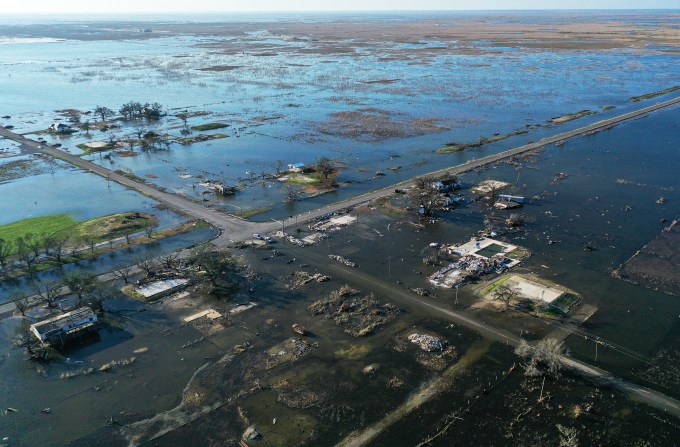When Secretary of State Antony Blinken and National Security Advisor Jake Sullivan sat down with Chinese officials in Anchorage, Alaska for the first high-level bilateral summit of the new administration, it was not a typical diplomatic meeting. Instead of a polite but restrained diplomatic exchange, the two sides traded pointed barbs for almost two hours. “There is growing consensus that the era of engagement with China has come to an unceremonious close,” wrote Sullivan and Kurt Campbell, the Administration’s Asia czar also in attendance, back in 2019. How apt that they were present for that moment’s arrival.
A little more than one hundred days into the Biden Administration, there is no shortage of views on how it should handle this new era of Sino-American relations. From a blue-ribbon panel assembled by former Google Chairman Eric Schmidt to a Politico essay from an anonymous former Trump Administration official that consciously echoes (in both its name and its author’s anonymity) George Kennan’s famous “Long Telegram” laying out the theory of Cold War containment, to countless think tank reports, it seems everyone is having their say.
What is largely uncontroversial though is that technology is at the center of U.S.-China relations, and any competition with China will be won or lost in the digital and cyber spheres. “Part of the goal of the Alaska meeting was to convince the Chinese that the Biden administration is determined to compete with Beijing across the board to offer competitive technology,” wrote David Sanger in the New York Times shortly afterward.
But what, exactly, does a tech-centered China strategy look like? And what would it take for one to succeed?
Tech has brought Republicans and Democrats uneasily together
One encouraging sign is that China has emerged as one of the few issues on which even Democrats agree that President Trump had some valid points. “Trump really was the spark that reframed the entire debate around U.S.-China relations in DC,” says Jordan Schneider, a China analyst at the Rhodium Group and the host of the ChinaTalk podcast and newsletter.
While many in the foreign policy community favored some degree of cooperation with China before the Trump presidency, now competition – if not outright rivalry – is widely assumed. “Democrats, even those who served in the Obama Administration, have become much more hawkish,” says Erik Brattberg of the Carnegie Endowment for International Peace. Trump has caused “the Overton Window on China [to become] a lot narrower than it was before,” adds Schneider.

The US delegation led by Secretary of State Antony Blinken face their Chinese counterparts at the opening session of US-China talks at the Captain Cook Hotel in Anchorage, Alaska on March 18, 2021. Image Credits: FREDERIC J. BROWN/POOL/AFP via Getty Images
As the U.S.-China rivalry has evolved, it has become more and more centered around competing philosophies on the use of technology. “At their core, democracies are open systems that believe in the free flow of information, whereas for autocrats, information is something to be weaponized and stifled in the service of the regime,” says Lindsay Gorman, Fellow for Emerging Technologies at the German Marshall Fund. “So it’s not too surprising that technology, so much of which is about how we store and process and leverage information, has become such a focus of the U.S.-China relationship and of the [broader] democratic-autocratic competition around the world.”
Tech touches everything now – and the stakes could not be higher. “Tech and the business models around tech are really ‘embedded ideology,’’ says Tyson Barker of the German Council on Foreign Relations. “So what tech is and how it is used is a form of governance.”
What does that mean in practice? When Chinese firms expand around the world, Barker tells me, they bring their norms with them. So when Huawei builds a 5G network in Latin America, or Alipay is adopted for digital payments in Central Europe, or Xiaomi takes more market share in Southeast Asia, they are helping digitize those economies on Chinese terms using Chinese norms (as opposed to American ones). The implication is clear: whoever defines the future of technology will determine the rest of the twenty-first century.
That shifting balance has focused minds in Washington. “I think there is a strong bipartisan consensus that technology is at the core of U.S.-China competition,” says Brattberg. But, adds Gorman, “there’s less agreement on what the prescription should be.” While the Democratic experts now ascendant in Washington agree with Trump’s diagnosis of the China challenge, they believe in a vastly different approach from their Trump Administration predecessors.
Out, for instance, are restrictions on Chinese firms just for being Chinese. “That was one of the problems with Trump,” says Walter Kerr, a former U.S. diplomat who publishes the China Journal Review. “Trump cast broad strokes, targeting firms whether it was merited or not. Sticking it to the Chinese is not a good policy.”
Instead the focus is on inward investment – and outward cooperation.
Foreign policy is domestic policy
Democrats are first shoring up America domestically – in short, be strong at home to be strong abroad. “There’s no longer a bright line between foreign and domestic policy,” President Biden said in his first major foreign policy speech. “Every action we take in our conduct abroad, we must take with American working families in mind. Advancing a foreign policy for the middle class demands urgent focus on our domestic economic renewal.”
This is a particular passion of Jake Sullivan, Biden’s national security advisor, who immersed himself in domestic policy while he was Hillary Clinton’s chief policy aide during her 2016 presidential campaign. “We’ve reached a point where foreign policy is domestic policy, and domestic policy is foreign policy,” he told NPR during the transition.

Jake Sullivan, White House national security adviser, speaks during a news conference Image Credits: Jim Lo Scalzo/EPA/Bloomberg via Getty Images
This is increasingly important for technology, as concern grows that America is lagging behind on research and development. “We’re realizing that we’ve underinvested in the government grants and research and development projects that American companies [need] to become highly innovative in fields like quantum computing, AI, biotechnology, etc,” says Kerr.
“Rebuilding” or “sustaining” America’s “technological leadership” is a major theme of the Longer Telegram and is the very operating premise of the report of the China Strategy Group assembled by Eric Schmidt, former executive chairman of Alphabet, Google’s parent company, and the first chair of the Department of Defense’s Innovation Advisory Board. Those priorities have only become more important during the pandemic. It’s a question of “how do we orient the research system to fill in the industrial gaps that have been made very clear by the COVID crisis?” says Schneider of Rhodium.
While it hasn’t gone so far as to adopt a national industrial strategy, the Administration’s most ambitious officials are looking to prod along tech research in critical sectors. To that end, the National Security Council, which Sullivan runs, is reshaping itself around technology issues; Biden appointed the first deputy national security advisor focusing on technology issues as well as a high-profile senior director for technology. Their goal: to harness the same energy that drove the development of Silicon Valley during the Cold War into out-competing China.
That said, the ingredients to American (and Western) innovation aren’t exactly a secret: investment in education, research, and talent. “The West still has [most of] the universities, R&D and leading companies,” says Brattberg. “There’s still a lot of competitiveness and leverage.” Unsurprisingly, investing to retain that edge is a key theme of Biden’s $2 trillion infrastructure plan, which includes funds for basic research, supply chain support, broadband connectivity, and support for the semiconductor industry.
As almost anyone in Silicon Valley will tell you, a functioning and welcoming immigration system is a crucial ingredient, too. “The U.S. is at its best when it welcomes talent from around the world and gives people the tools to succeed and thrive here,” says Gorman. Whether the Biden Administration can strike a deal with Senate Republicans on comprehensive immigration reform – or even funding basic research – remains an open question, though. And even if it can succeed, American ingenuity is no longer sufficient on its own.
Team America
Whether it’s for talent or partnerships, the U.S.-China tech competition will be won overseas. Allies are “the most salient and straightforward way Biden can bring leverage to the table compared to Trump,” says Schneider.
Biden, Blinken, and other senior administration officials have loudly and repeatedly pronounced their preferences to work with democratic partners on international challenges, particularly in the Indo-Pacific region. It is no accident that Blinken and Sullivan’s meeting in Anchorage was preceded by a trip to Japan and South Korea, two of America’s closest allies in the region, and that Japanese Prime Minister Yoshihide Suga was the first foreign leader to visit Biden at the White House. “If you add the U.S. to the EU, Australia, Taiwan, and South Korea, you tilt the balance of economic heft and technological prowess back toward us,” he adds.

U.S. President Joe Biden and Prime Minister Yoshihide Suga of Japan hold a news conference in the Rose Garden of the White House on April 16, 2021. Image Credits: Doug Mills-Pool/Getty Images)
The ground for Blinken and company is increasingly fertile. Chinese diplomats have been aggressive, if not downright condescending, to countries they perceive have slighted China. In one recent example, the Chinese embassy in Dublin sent a series of tweets targeting an Irish-British journalist couple who had been forced to relocate to Taiwan as a result of a harassment campaign over their critical coverage of China’s Uyghur policy in Xinjiang. This so-called ‘wolf warrior’ diplomacy (a reference to a jingoist action film) is prompting a backlash, and helping convince many policy elites in countries who had hoped to sit out a U.S.-China conflict that perhaps Washignton’s China skeptics have a point.
This perhaps explains the proliferating alpha-numeric soup of coalitions and alliances being floated to secure a free and democratic internet for the future. There’s the D10, a secure supply chain network floated by British Prime Minister Boris Johnson, which adds Australia, India, and South Korea to the existing G7 countries (U.S., U.K., Canada, France, Italy, Germany, and Japan). Schmidt’s report calls for a T-12 (the D10 minus Italy plus Finland, Sweden, and Israel). Others look to expand existing technology-related groupings like the Five Eyes signals intelligence alliance of the U.S., U.K., Australia, Canada, and New Zealand, or harness burgeoning non-technical ones like the Quad. Gorman points to the significance of the news that the Quad itself – Australia, India, Japan, and the US – announced the creation of a working group on emerging technology at its first-ever (virtual) leaders summit in March.
Meanwhile, Senator Mark Warner, a Democrat from Virginia, has proposed a technology partnership to be run out of the State Department to coordinate with allies – including a $5 billion fund for research – with the explicit purpose of countering China.
International tech standards are increasingly not set by the West
Even if it can shephard its allies, the U.S. still faces stiff international headwinds. The Trump Administration’s decision to withdraw from the Trans-Pacific Partnership, a trade deal negotiated by the Obama Administration with ten other Pacific Rim countries with the intent of setting trade standards in the Asia-Pacific, was taken as a sign that perhaps the U.S. pivot to Asia was less ambitious than advertised. The pact, rebranded as the Comprehensive and Progressive Agreement for Trans-Pacific Partnership (CPTPP), has continued without the U.S. – and now even China has expressed interest in joining.
Trump’s disdain for working within multilateral forums has also meant that Washington has essentially ceded the field of global technical standard-setting. Beijing has taken advantage, aggressively working the UN system so that Chinese officials now lead four of the 15 specialized UN agencies, including the two most focused on regulating technology: the International Telecommunication Union (ITU), which helps set global technical standards, and the World Intellectual Property Organization (WIPO), which is responsible for protecting intellectual property rights around the world.
China is also backing Russian efforts to rewrite internet governance. With Chinese support, Russia won a UN General Assembly vote in 2019 to start drafting a new cybercrime treaty. Their goal is to replace the U.S-backed 2001 Budapest Convention on Cybercrime, which was created by democracies through the Council of Europe, with a treaty that one critic said would include provisions “likely to provide cover to authoritarian governments to persecute their political opponents.” Russia and China also unsuccessfully tried to use the (now Chinese-led) ITU to replace the Internet Corporation for Assigned Names and Numbers (ICANN), a private body of experts that governs internet domain names.
These efforts are all part of China Standards 2035, an explicit plan to internationalize standards to Chinese preferences in areas like 5G and the Internet of Things (IoT). As Emily de La Bruyère and Nathan Picarsic wrote on TechCrunch last year, “Beijing has spent the past two decades establishing influential footholds in multilateral bodies and targeted industrial areas. Now, it is using those footholds to set their rules – with them, to define the infrastructure of the future world.”
Hawks, doves, and U.S. divisions
Even within the new consensus on China, there are fissures on how to handle China itself.
On the hawkish side, the Schmidt Report concedes that “some degree of technological bifurcation is in U.S. interests.” But calibrating just how much is a difficult question. “It’s already a reality,” says Barker of the German Council on Foreign Relations. “The question is: how deep does the split have to be?”
Few argue for complete decoupling, Brattberg, the Carnegie scholar who has written extensively on tech diplomacy, says. After all, many are loath to concede completely separate ‘free’ and ‘authoritarian’ internets. There are other implications as well: a “bipolar, bifurcated internet … would have some very serious adverse implications in terms of cost [and] a slowdown in innovation,” one former UK intelligence official told me last year.
The key is to pinpoint which specific technologies are essential to produce domestically. “To the extent we [decouple from China], we have to do it in a smart way,” says Gorman. “There’s a risk of going too far and hurting potential innovation in the U.S. So the debate going forward is going to be: How do you address true national security vulnerabilities without emulating an authoritarian approach that might say ‘just ban everything from a certain country.’”
And even if we can form a consensus at home, America’s allies are no less divided as I wrote last year with regards to Huawei. While the debate over the Chinese company’s role in 5G has evolved, with both France and the U.K. (in a reversal) moving to phase out its kit, the debate over what role China should play economically and technologically in Europe is still very much alive.
The U.K. government is clear-eyed; in its Integrated Review of foreign and defense policy published in March, it acknowledged that China’s “growing international assertiveness … will pose an increasing risk to UK interests” and set an explicit goal for itself to be a third “science and tech superpower.” France, meanwhile, laid out an Indo-Pacific strategy backing the principle of a free and open Pacific, an explicit challenge to Chinese preferences.
But many are still equivocal. As Singapore’s Prime Minister Lee Hsien Loong wrote last year in Foreign Affairs, “Asian countries do not want to be forced to choose between the two.” Berlin made clear in its Indo-Pacific strategy last year that it was also reticent to make an outright choice. New Zealand, conscious of its important trade with China, is reluctant to expand the use of Five Eyes beyond intelligence sharing. Meanwhile, Italy endorsed China’s infrastructure-focused Belt and Road Initiative in 2019 and called the country a “strategic partner” last year. And the European Union moved forward on a trade deal with China late last year despite very public lobbying against it from the United States.
A world of tradeoffs
The challenge for the Biden Administration will be to assemble practical coalitions without asking allies and partners to make impossible choices. They will succeed if they can reframe the question. “In Europe, they don’t like ‘decoupling’ but they do like ‘diversification’,” says Brattberg. They also don’t like the idea of joining a U.S.-led alliance. Instead, he says, Washington should frame cooperation as “coalitions among like-minded democrtaic partners.”
For that to work, the U.S. will have to work out the bilateral issues it has with its allies first. “We need to be much more savvy on engaging directly with the EU on resolving issues like data transfers, digital taxation, and data privacy,” he said. “Digital sovereignty shouldn’t come at the expense of partnership with like-minded partners.”

Chancellor of Germany Angela Merkel gives a speech during the press conference at the end of the meeting with Chinese Premier Li Keqiang (not pictured) of at The Great Hall Of The People on September 06, 2019 in Beijing, China. Image Credits: Andrea Verdelli-Pool/Getty Images
Nimbleness will be key – multiple experts told me it will be far better to create ad hoc coalitions on particular issues than to create a single fixed democratic tech alliance. This would have the benefit of keeping groupings tight without excluding countries with key expertise in particular areas (think Sweden and 5G or Taiwan and semiconductors). Washington should also take a collegiate approach, recognizing and respecting that its allies will not always be in lock-step on every aspect of the relations with China. In other words, the U.S. shouldn’t let the perfect be the enemy of the good, as agreement most of the time on most issues is probably sufficient to create the momentum Washington needs.
The U.S. can still compete globally and widen the circle of like-minded countries, Gorman, the scholar at GMF, tells me, but it has to invest in them if they are going to build out their tech sectors in a way that is aligned with democratic values and standards. “It’s really about providing an attractive counteroffer,” she said.
Even if the United States retains its technological edge for the near future, Americans should start adjusting to a future where Silicon Valley’s dominance is no longer inevitable. Chinese technologists are pulling ahead in areas like 5G while Chinese firms are competing on price (mobile phones) and increasingly on quality (e-commerce) and innovation (see: TikTok). China also exerts enormous clout through its control of supply chains and rare earth metals as well as its vast customer base.
Perhaps China’s greatest leverage point is its looming presence over Taiwan. As long as Taiwan remains one of the leading manufacturers of semiconductors (chip giant TSMC manufactures 90% of the world’s most advanced chips), the world’s technology industry will be vulnerable to the precarity of cross-Strait relations.
Will technology become just another chip in the geopolitical game the U.S. and China are playing, then? The Biden Administration is more prepared than its predecessor to weigh the tradeoffs, Barker of the German Council on Foreign Relation retells me. But it’s unclear how Washington, so early in this administration, will prioritize technology issues if faced with the prospects of Chinese cooperation on other priorities.
After all, at any given moment, the U.S. (and its allies) must weigh a host of priorities vis-à-vis China. And for all of the downsides to its bellicosity, the Trump Administration’s fixation on a handful of issues gave it leverage: it was willing to ignore Uyghurs and other human rights abuses in order to get a trade deal (even if it was deeply flawed).
The Biden Administration, on the other hand, has not yet articulated any priorities at all. If the rhetoric from Washington can be believed, the White House thinks it can make progress on climate, Taiwan, trade, human rights, and any number of other areas, all at once. This on its own creates a vulnerability. As historian Niall Ferguson reminded us in a recent Bloomberg column, then National Security Advisor Henry Kissinger was outmaneuvered when he went to China in 1971 with a multi-issue agenda and China singularly focused on Taiwan.
Beijing’s diplomats, despite their wolf-warrior missteps, are still savvy negotiators. If they are allowed to do so, they will once again try to play different parts of the Administration against each other, conditioning progress on climate, for example, on a softening over geopolitics, as the Brookings scholar Thomas Wright has warned. In that light, it simply strains credulity that an ‘all of the above’ approach will work, especially when Biden’s wish list keeps the issues Trump cared about, like trade, 5G, and Taiwan, and adds those he ignored, like human rights, democracy, and climate change.
This is where America’s alliances may prove to be Biden’s hidden ace. If Biden can forge a common-enough front with a wide-enough spectrum of allies, the U.S. will be better able to withstand Chinese pressure to trade progress on one issue against another. Instead, forcing China to negotiate with the U.S. and its allies on an issue-by-issue basis may put Washington in a better position to succeed.
Of all the issues in America’s China portfolio, though, the tech race provides one extra advantage: for all the talk of industrial strategy, alliances, and diplomatic maneuvers, Washington is not the only or even primary actor involved. The Biden Administration can help set the rules, invest in basic research, and defend American interests abroad, but American innovation depends on its innovators – and there are still bountiful numbers of them tinkering away.

Source: Tech Crunch


















